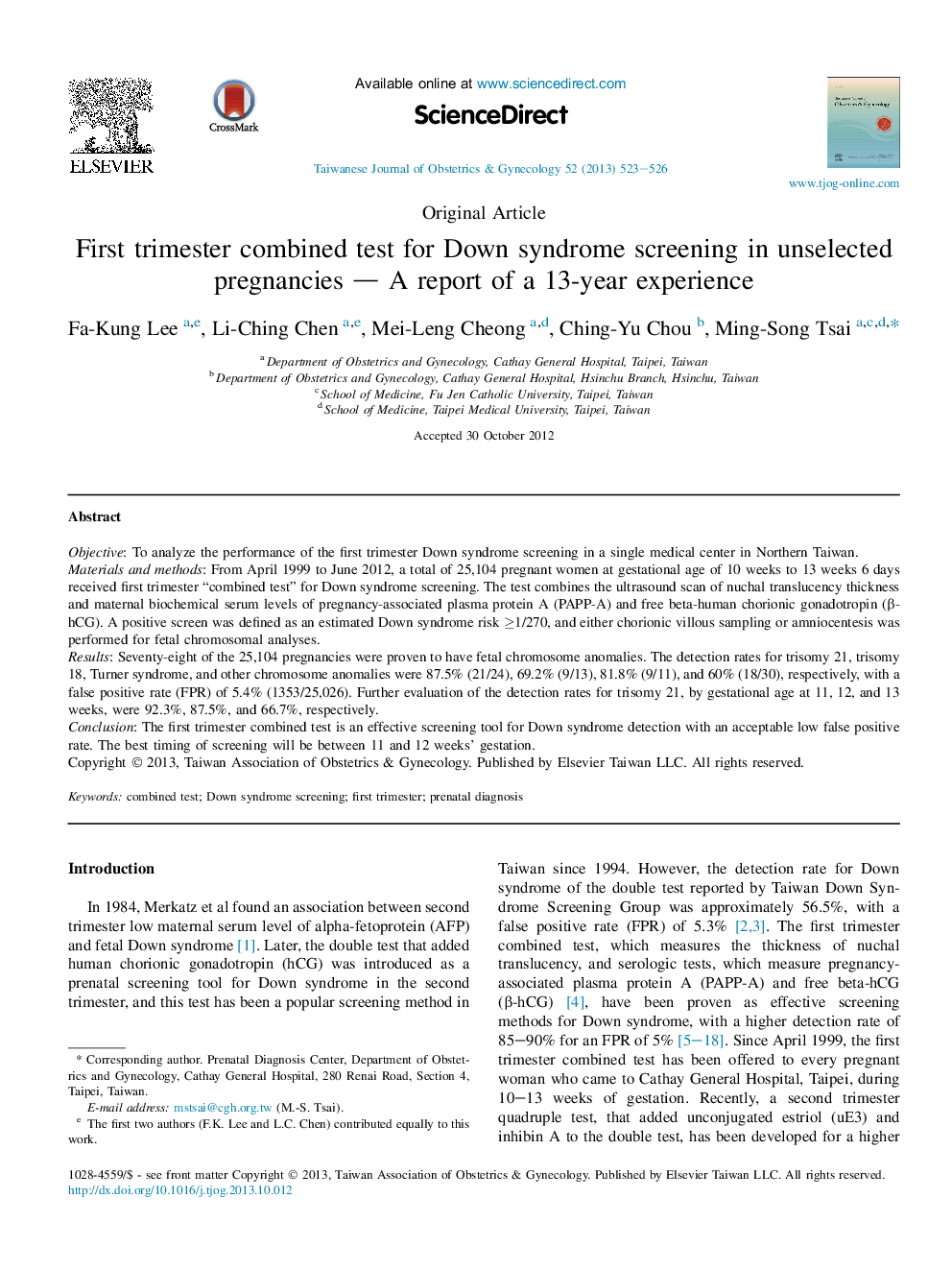| Article ID | Journal | Published Year | Pages | File Type |
|---|---|---|---|---|
| 3975282 | Taiwanese Journal of Obstetrics and Gynecology | 2013 | 4 Pages |
ObjectiveTo analyze the performance of the first trimester Down syndrome screening in a single medical center in Northern Taiwan.Materials and methodsFrom April 1999 to June 2012, a total of 25,104 pregnant women at gestational age of 10 weeks to 13 weeks 6 days received first trimester “combined test” for Down syndrome screening. The test combines the ultrasound scan of nuchal translucency thickness and maternal biochemical serum levels of pregnancy-associated plasma protein A (PAPP-A) and free beta-human chorionic gonadotropin (β-hCG). A positive screen was defined as an estimated Down syndrome risk ≥1/270, and either chorionic villous sampling or amniocentesis was performed for fetal chromosomal analyses.ResultsSeventy-eight of the 25,104 pregnancies were proven to have fetal chromosome anomalies. The detection rates for trisomy 21, trisomy 18, Turner syndrome, and other chromosome anomalies were 87.5% (21/24), 69.2% (9/13), 81.8% (9/11), and 60% (18/30), respectively, with a false positive rate (FPR) of 5.4% (1353/25,026). Further evaluation of the detection rates for trisomy 21, by gestational age at 11, 12, and 13 weeks, were 92.3%, 87.5%, and 66.7%, respectively.ConclusionThe first trimester combined test is an effective screening tool for Down syndrome detection with an acceptable low false positive rate. The best timing of screening will be between 11 and 12 weeks' gestation.
